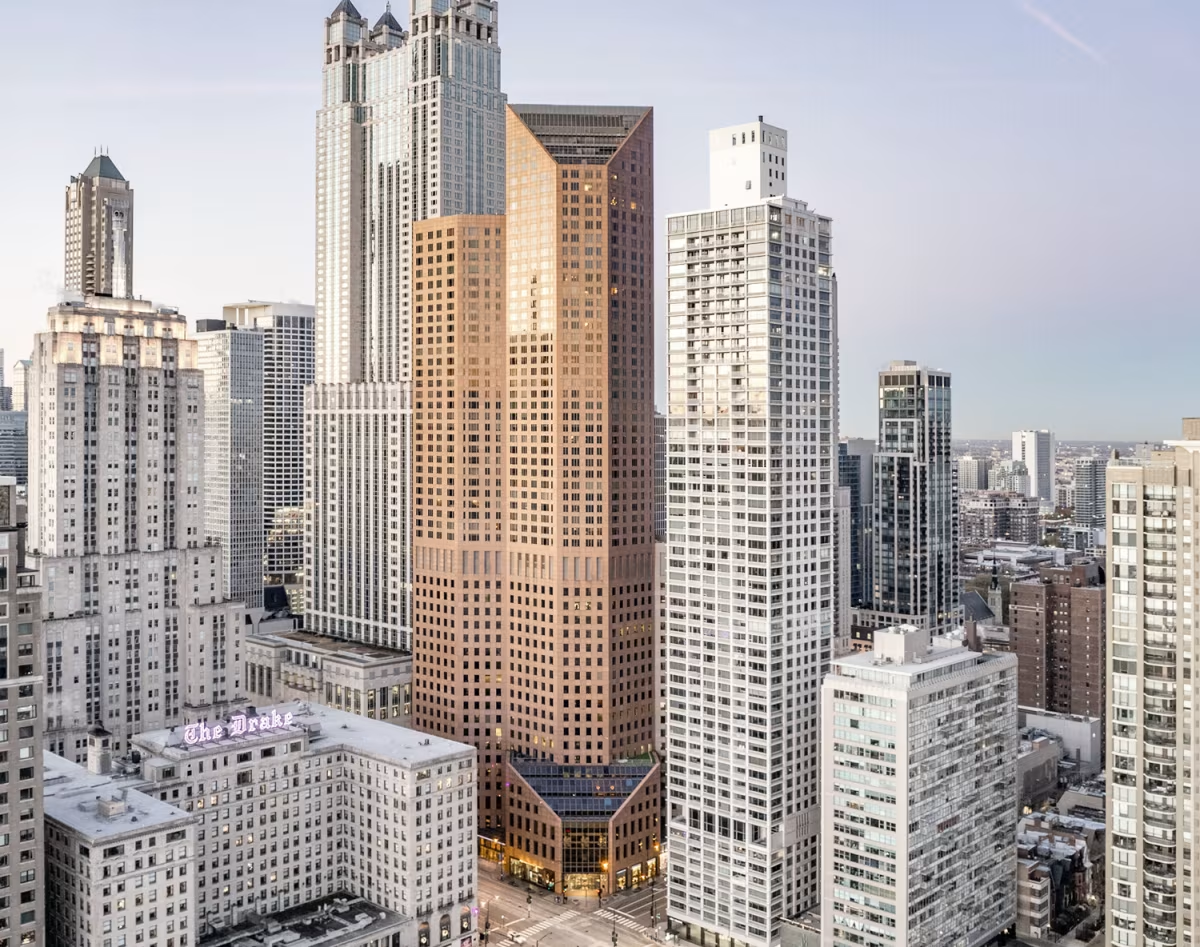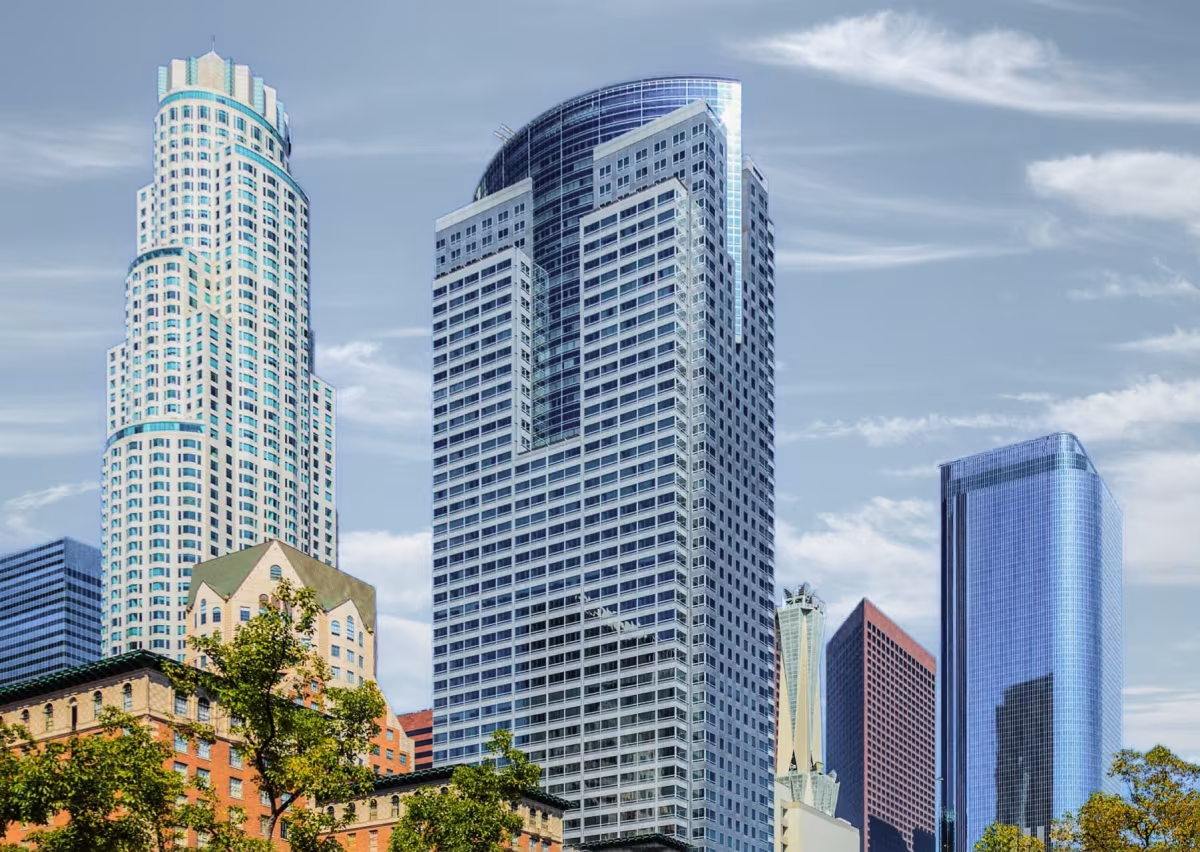One Magnificent Mile Building vs Gas Company Tower


Comparing the One Magnificent Mile Building and the Gas Company Tower is compelling because they were both designed by Skidmore, Owings & Merrill, yet they stand in different cities (Chicago, IL and Los Angeles, CA), and were completed more than 8 years apart.
What this will allow us to see, is how the same firm's approach adapted to different places at roughly the same time (8 years isn't that much time when it comes to urban context and architecture).
Height & Size
These two towers present an interesting contrast in their proportions. The Gas Company Tower rises higher at 748ft (228m), while the One Magnificent Mile Building reaches 673ft (205m). However, the One Magnificent Mile Building accommodates more floors with 57 levels above ground, compared to 52 floors in the Gas Company Tower.
This suggests different approaches to interior space design. The Gas Company Tower has an average floor-to-floor height of approximately 4.4m, while the One Magnificent Mile Building has more compact floors averaging around 3.6m each. The taller building's more generous floor heights might indicate grander interior spaces, higher ceilings, or different programmatic requirements.
These different proportions likely reflect the specific needs each building was designed to serve, whether driven by zoning regulations, client requirements, or the intended use of the spaces within. The contrast shows how architects can achieve different spatial experiences even when working with similar overall building scales.
Architectural Style
Both the One Magnificent Mile Building and the Gas Company Tower were designed in line with the aesthetic conventions of the Postmodernism style.
The Gas Company Tower was designed at a moment when the Postmodernism style was already in decline, making it more of a lingering expression of the movement. In contrast, the One Magnificent Mile Building was built when the style still carried greater cultural weight.
Uses
The One Magnificent Mile Building follows a mixed-use model, combining retail, commercial and residential. In contrast, the Gas Company Tower has remained primarily commercial.
The One Magnificent Mile Building offers 182 residential units.
Structure & Facade
Both towers share the same structural solution, a Frame system.
A frame structure uses a grid of columns and beams to carry the building's loads. This frees the walls from structural duties, allowing for flexible floor plans and larger windows.
However, when it comes to the facade, both buildings use different approaches. The One Magnificent Mile Building uses a Modular facade, while the Gas Company Tower uses a Curtain Wall facade.
A Modular facade like the one seen in the One Magnificent Mile Building employs prefabricated panels, often mixing solid surfaces with smaller windows, while a curtain-wall facade like the one seen in the Gas Company Tower uses a lightweight glass curtain wall hung from the structure.
| One Magnificent Mile Building | Gas Company Tower | |
|---|---|---|
| Skidmore, Owings & Merrill | Architect | Skidmore, Owings & Merrill |
| 1978 | Construction Started | 1988 |
| 1983 | Year Completed | 1991 |
| Postmodernism | Architectural Style | Postmodernism |
| Mixed | Current Use | Commercial |
| 57 | Floors Above Ground | 52 |
| 205 m | Height (m) | 228 m |
| Frame | Structure Type | Frame |
| Concrete | Vertical Structure Material | Steel |
| Concrete And Steel | Horizontal Structure Material | Concrete |
| Yes | Facade Structural? | No |
| Granite, Glass | Main Facade Material | Glass, Steel |
| IL | State | CA |
| Chicago | City | Los Angeles |
| 940 980 North Michigan Avenue | Address | 555 West 5th Street |